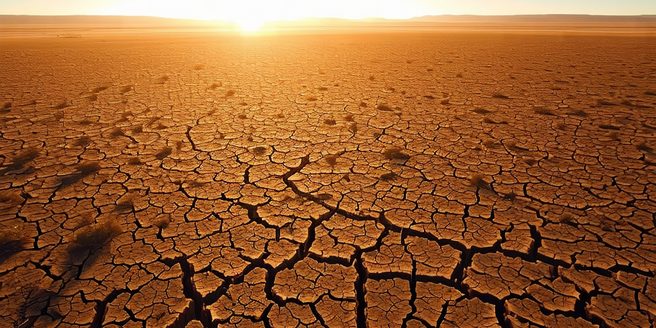
Understanding El Niño: A Climate Phenomenon
El Niño is a complex climate pattern characterized by warming of the sea surface temperatures in the central and eastern tropical Pacific Ocean. This phenomenon occurs irregularly every two to seven years and significantly influences global weather patterns. During an El Niño event, trade winds weaken, and warm water spreads eastward, altering atmospheric conditions. This results in varied climatic effects worldwide, including increased rainfall in some regions and droughts in others. In Australia, El Niño typically leads to reduced rainfall, disrupting agriculture and water supplies. Understanding this phenomenon is crucial for anticipating its impacts on climate systems. Accurate predictions can aid in preparing for potential shifts in weather patterns, helping mitigate adverse effects on ecosystems, economies, and communities dependent on climate stability.
How El Niño Contributes to Desertification
El Niño can exacerbate desertification in susceptible regions by altering precipitation patterns. In Australia, the weakening of trade winds shifts rainfall away from the continent, leading to drier conditions. Prolonged reductions in rainfall contribute to the degradation of soil health, promoting desert-like conditions. Vegetation cover diminishes as plants struggle to survive with limited water, increasing soil erosion and loss. This phenomenon amplifies the vulnerability of ecosystems not adapted to arid conditions, stressing water resources. Livelihoods dependent on agriculture suffer as water scarcity and poor crop yields prevail. The cycle of El Niño events can thus significantly push affected areas toward excessive dryness and desertification, prompting urgency in strategic planning for sustainable water and land management.
Impact of Desertification on Australian Ecosystems
Desertification significantly impacts Australian ecosystems, threatening biodiversity and ecological balance. As land becomes increasingly arid, native plant and animal species struggle to adapt or relocate. The loss of vegetation cover accelerates soil erosion, reducing habitat quality and availability. Ecosystems reliant on specific climatic conditions may face collapse. Furthermore, desertification influences water cycles, diminishing river flows and wetlands necessary for sustaining diverse life forms. As habitats shrink and degrade, the risk of species extinction rises. Communities depending on these ecosystems for food, medicine, or cultural practices face economic and social challenges. Addressing desertification necessitates understanding ecosystem dynamics and implementing conservation strategies to enhance resilience and ensure the long-term viability of Australia’s delicate natural heritage.
Human Activities and Desert Expansion in Australia
Human activities significantly contribute to desert expansion in Australia through unsustainable land use practices. Overgrazing by livestock removes vegetation cover, leaving soil exposed to erosion. Deforestation for agriculture reduces tree cover, disrupting the water cycle and exacerbating soil degradation. Urbanization encroaches upon natural landscapes, compacting soil and altering drainage patterns. Additionally, mining operations disturb large tracts of land, creating barren surfaces susceptible to desertification. Irrigation practices can lead to salt accumulation, further degrading soil health. These activities, alongside climate phenomena like El Niño, intensify the spread of desert conditions. Policymakers need to address these anthropogenic drivers by promoting land management practices that conserve resources and restore ecological balance to combat desert expansion effectively.
Mitigation Strategies for El Niño and Desertification
Implementing strategies to mitigate the impacts of El Niño and desertification requires coordinated efforts in climate adaptation and land management. Early warning systems predicting El Niño events enable preparedness, reducing adverse effects on agriculture and water resources. Sustainable farming practices, such as crop rotation and rainwater harvesting, can enhance resilience to climatic fluctuations. Reforestation and afforestation initiatives improve soil health and increase water retention, countering desertification. Integrating traditional ecological knowledge with modern practices supports the development of effective strategies tailored to local environments. International cooperation and policy frameworks focused on climate change adaptation are vital to building capable infrastructures that withstand environmental stressors. These strategies aim to preserve ecosystems and safeguard communities from the long-term consequences of climatic variability.
